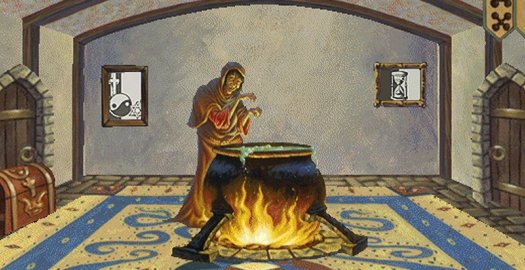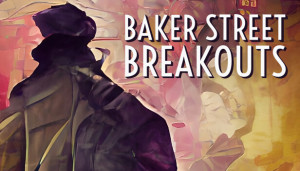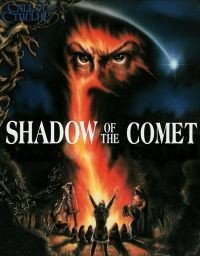U.S. Edutainment Games of the ‘90s that Shaped My Childhood: A Retrospective

When I think of the first video games I ever played, my thoughts gravitate towards titles like The Legend of Zelda: Ocarina of Time (my first experience of an epic 3D quest) and Discworld (my first taste of maddening moon logic). These games had a profound impact on me; they opened me up to exciting new worlds that seemed, at the time, without limit. These worlds were so immersive and engaging that they remain firmly entrenched in my memory over twenty years later. To this day, the mnemonic 'twenty-three is number one' (the order in which you need to beat a series of deku scrubs in Zelda: OoT) is more stubbornly etched in my memory than my own phone number.
But when I think back further, it's not quite true that this was my first exposure to video games. The nineties and early noughties saw the increased affordability and mainstream adoption of personal computers in both homes and – for the first time – schools. This led to an edutainment (or educational video games) boom, and my UK primary school was no exception; it was correspondingly equipped with a suite of beautiful, beige RM Window Box PCs, as was the style at the time.
Long before my family inherited our first computer and I mastered the art of spamming item combinations to solve adventure game puzzles, therefore, I was inducted into the gaming world via good, clean, age-appropriate edutainment. Though the best kind were the ones where you didn't even realize you were learning; it didn't seem to matter what form they took. My passion for game-based exploration and discovery was ignited, and I devoured everything my school's modest games 'library' had to offer. Many of these happened to be US-developed, possibly due to companies' more established history of game development and larger budgets. These are the ones I remember best.
__large.jpg)
'Member these? (Credit: RM promo pic)
Storybook Weaver Deluxe (MECC/The Learning Company, 1994)
'[one of the] 10 top-rated software selections for your children' – Lesley Alderman, The Buffalo News, 1994
__large.png)
Before I began writing Final Fantasy-inspired fiction on Microsoft Works in Papyrus, there was Storybook Weaver. Designed for children aged 6 to 12, this program enables players to realize their magnum opus(es) by 'weaving' their stories into multimedia experiences. With its library of over 1,700 clip art-like images, 142 backgrounds and over 150 songs and audio clips, players can set the scene for each page of their narrative. This is achieved by arranging whatever elements you want wherever you want, like a sticker book. (So, naturally, my siblings and I applied the toilet flushing and Tim Allen-like grunt sound effects with wild abandon.)
Greatly expanding on the content of the original 1990 game, Storybook Weaver Deluxe boasts diverse image categories, with everything from housing, pets and vehicles to outer space, fantasy creatures and classic mythology. Refreshingly for a '90s game, characters represent various nationalities, so you can pick the one you most relate to and imagine yourself on an adventure of your own creation. Characters are also shown in different positions (e.g., standing, sitting, running, lying down), and objects can be flipped, resized, color-swapped and modified in a Paint-like program to achieve the nuance your toilet humor-enriched space quest demanded and deserved.
Backgrounds range from ancient to modern settings and can also be customized by mixing and matching scenery and applying day-to-night and weather effects. You can even add your own voice recordings – because who doesn't need audio evidence of their startlingly strong Northern childhood accent for mockery-driven posterity?
In a bout of nostalgia, I tracked down an old physical copy of this a few years ago. Sadly, however, despite that slapping introductory fanfare, I found it a quite limiting way of visualizing stories (this wasn't helped by the vanilla American narrator lending his voice to just about every sound effect). I shouldn't really have been surprised, though – this was the equivalent of squeezing into a pair of favorite childhood trousers and expecting them not to immediately split at the crotch on dropping into a set of vigorous lunges.
I can see why this stimulated my imagination when I was younger, though, with its colorful graphics, story prompts and customisation options. I'd love to see an updated, further expanded version (e.g., with more images, poses, effects and customisation options) – a Storybook Weaver Deluxe Deluxe, if you will. Gotta distract the kids from endless TikToks and bizarre YouTube unboxing videos somehow, right?
Logical Journey of the Zoombinis (Brøderbund, 1996)
'...sneakily fools kids ages eight to 12 into developing logic skills such as set theory, data analysis and algebraic thinking' – James Karney, Computer Shopper, 1996
__large.jpg)
I remembered this as a quirky, engaging puzzle game that fell into the category of 'educational games so fun they don't feel like learning', but on revisiting it via a Let's Play I was surprised by just how creative and challenging it is. Zoombinis goes hard by introducing its 8+-year-old target audience to its own mildly harrowing 'bini lore: Zoombinis, a diminutive blue species with distinctive funky features, must escape their once peaceful paradise, Zoombini Isle, and seek out a new home after they are tricked and enslaved by their thuggish neighbors, the Bloats.
Likely inspired by Lemmings (1991), the player must guide their exodus of Zoombinis to the promised land of Zoombiniville through a series of deductive reasoning-based puzzles. Rather than specific skills, however, each Zoombini is distinguished by their physical characteristics (e.g., groovy shades or skates; this did undermine the 'enslavement' narrative just a tad), and puzzles are typically based on finding patterns involving these features or preferences rather than navigating an environment of obstacles.
What I didn't know is that there are 625 unique Zoombini combinations (1,250 if you count both genders), and to 'properly' complete the game, you must save all of them. As you can only take 16 Zoombinis on each journey (completing a path of nine out of a total of 12 puzzles, which are divided into four sections of three puzzles), according to my edutainment-enhanced math skills, the 'true ending' requires playing through the game a minimum of 40 times. Zoombinis can be temporarily lost, too, and every few legs the difficulty increases, rising from 'Not so easy' to 'Very, very hard'. All these years, only to learn that I never actually saved the whole Zoombini race – just a ragtag group of them. Ignorance truly is bliss.
Nevertheless, the puzzle design allows you to make mistakes (to an extent) and experiment with different combinations. While something might appear baffling at first glance, therefore, it starts to make sense after a few tries. This makes for intuitive and enjoyable puzzle-solving, based more on general logical thinking than a specific skill like arithmetic or spelling. My favorites were the pizza preparation (a classic trial-and-error puzzle) and paintball blaster (similar to Battleship but based on deduction rather than luck) puzzles.
The game also features attractively colorful, cartoonish animation and high-quality, suitably zany voice actors, including a memorably hammy George of the Jungle-esque British narrator. In fact, the game was so popular it was remade for modern devices almost 20 years later in 2015, validating 10-year-old me's refined taste in digital media. (And yes, I did say 'Zoombini' a lot in this section.)
Treasure Cove! (The Learning Company, 1992)
'one of the best math games ever made for 5–8 year olds, bar none' – Home of the Underdogs
__extra-large.png)
You know when there's an exclamation mark in the title that you're in for some serious fun. Part of the Learning Company's Treasure Trilogy (alongside Treasure Mountain! and Treasure MathStorm!), Treasure Cove! is a side-scrolling puzzle exploration game that teaches math, reading and oceanography skills to players aged 5 to 9. You take on the role of a diver (or 'Super Seeker') who must plug pipes leaking oil into the formerly pristine ocean and comb the seafloor for gems to rebuild the destroyed Rainbow Bridge and cut the pollution off at its source.
There's a latent environmental message somewhere in all of this, but it's submerged beneath a dastardly mad scientist called the Master of Mischief, pipe-plugging puffer fish (?) and oil spills characterized as cute little 'goobies'. While I recognised as a kid that goobies were bad (I mean, they're sticky and swimming into them deducts a light unit from your torch), as the game is presented like a fantasy, I can't say I made any connection to broader parallel issues in the real world.
And, while I appreciate that the developers probably felt it was important not to overwhelm their young target audience, I think they could have gone a touch harder here. Like say, shown some more of the negative effects of the oil pollution. I might've found the echoey '90s Intel jingle unspeakably terrifying, but I think I could've handled it.
The educational focus centers, instead, on math, reading and general ocean knowledge-themed content. Players must seek clues by catching orange starfish with their bubble blaster and answering multiple-choice questions or riddles (e.g., 'Fish are slippery, fish are wet. Fish get caught in a fishing... [sail/rock/net]'). The resulting clues provide descriptive terms such as 'three', 'white' and 'eels' to help pinpoint gems and the sacrificial puffer fish's hiding place.
As well as calling on the player's deductive reasoning, this requires basic resource management, as the bubbles from your blaster and light from your torch are depleted with every use and can only be replenished at select points. While the questions do scale up slightly in difficulty as you progress, the game is forgiving, and if you exhaust your reserves the world doesn't end. Goobies, to my mild disappointment, don't inundate the ocean; you can simply gradually build everything back up. If only fate were as kind to the unsuspecting puffer fish.
Encarta MindMaze (Microsoft, 1993–2007)
'Questions ranged from simple science like heat transfer and electronics to puzzles tackling metallurgy and industrial safety.' – Kotaku Australia, 2020
__large.jpg)
Before being made sadly redundant by the internet and Wikipedia, the go-to digital multimedia encyclopedia and homework resource was Microsoft Encarta. Alas, despite such media being in its infancy, certain Year 7 geography teachers whose names rhymed with 'Balderson' somehow weren't fooled by the ingenious, pioneering tactic of copying and pasting articles for homework essays – even when you had the initiative to change the font, size and color and add your own pictures. ...Or so I've been told.
What every student was really there for, though, was the general knowledge trivia game Easter egg nestled in every pre-2008 version: MindMaze. Set in a cursed medieval castle, the player must answer trivia questions on a range of topics (from art, language and literature to sports, hobbies and pets) to navigate the maze of rooms and reach the end, escaping as well as freeing the castle's cursed inhabitants. Oh, and you're also declared next in line to be king (knowledge as its own reward? Pfft, don't be ridiculous). The king's promise to 'take you as his own' to realize this end, however, makes this prospect slightly less appealing.
I'm not sure that I ever reached that point, however, as one of my most enduring memories of this game was how fiendishly difficult it was, despite the difficulty level selector at the start. Or if I did eventually emerge triumphant, it wasn't without a hefty dose of good old-fashioned guesswork (each question is multiple choice). There's also an encyclopedia look-up function, which, I suppose, makes abundant sense (though the timer, which shaves points off by the second, certainly doesn't make it feel that way). But, at eleven years old, who had time for looking things up? Winging it and failing repeatedly was, of course, the only natural choice. (Why else would a minxy medieval lady tell me 'I’m a woman of destiny, choose your path to find yours' every time I lost?) In my defense, while the lower difficulty level reduced the number of points required to clear the game – and thus reduced the time taken to do so, which could range from half an hour to two hours – I'm not sure that it actually made the questions any easier. And while there were a few softballs in there, there were also questions on fluid dynamics and specific geographic regions of the US (I'm from the UK).
Nevertheless, there was much to enchant here – from the labyrinthine hand-drawn castle rooms to the eccentric jesters, nobles and parrots and their whimsical, if repetitive, dialogue and sound bites. The best part about MindMaze, however, was that it was bundled with every copy of Encarta, which meant it could be played during computer classes or library study sessions as a viable research activity without teachers batting an eyelid. Take that, Mr Alderson Balderson.













